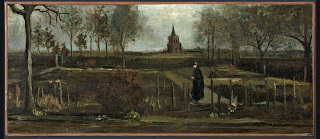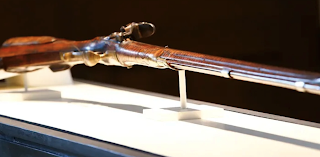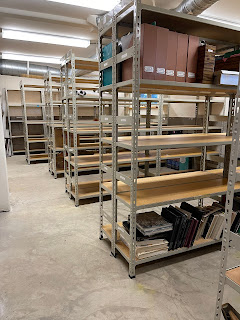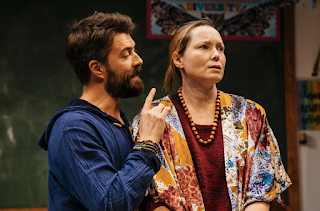How very lucky the Albuquerque Museum in New Mexico is to have a Museum Director like Andrew Connors, to snag a show worthy of the greatest museums in the world. It is called, “Designing the New: Charles Rennie Mackintosh and the Glasgow Style”.
The show was organized by the curator of European Decorative Arts and Design at he Glasgow Museums, Alison Brown, in 2018 to celebrate the 150th anniversary of Mackintosh’s birth. Even though Covid put it on hiatus it is continuing its tour of just four venues in the States.
Mackintosh and his collaborators were known as ‘The Four’ comprised Charles Rennie Mackintosh (1868-1928), James Herbert MacNair (1868 - 1955), and the sisters, Margaret Macdonald (1864 - 1933) and Frances Macdonald (1873 - 1921). TheFour had met at the Glasgow School of Art and Mackintosh married Margaret and MacNair married Frances. Together they came up with innovative designs that influenced design and style for generations to come.
Mackintosh, as architect, and designer became the main exponent of the style. The Four were best known for their decorative arts and this exhibition has 165 works including Furniture, textiles, posters, drawings and glass. While artists may wish for control of the space their work will occupy, they rarely do. Mackintosh worked as an architect designed every detail of his buildings using the full range of media, thus “owning” the entire environment.
The imaginative interiors he created from 1896 to 1917 for Miss Catherine Cranston’s four tearooms in central Glasgow are his best known works. Here is an image of the lady herself and one of the high-back chairs from her Argyle Street Tea Rooms. (Images Catherine Cranston and one of the chairs)
A highlight of the exhibition is a large frieze by Margaret Macdonald Mackintosh. created in gesso on burlap with painted string, glass beads, thread, tin leaf, papier-mache and steel pins. It was a partner panel to a frieze by her husband, Charles, in their collaborative decoration of the Ladies Luncheon Room for Miss Cranston’s Ingram Street Tearooms. They had international impact as they were shown in the Vienna Seccession exhibition of 1900 before installation in the Tea Rooms. Here is the entire image and a detail.
Personally, I love the posters and on-line you can still buy copies. Here is one Mackintosh did in 1896 for the The Scottish Musical Review.
I couldn’t resist this design for a music room (1905) by George Logan (1866-1939) a furniture designer, musician, and poet. It was inspired by the “Choric Song” from Alfred Tennyson’s “Lotus Eaters.”, note the motto inscribed along the picture rail. The patterns of flowers on the walls and textiles and the attenuated shapes of the furniture are typical of the Glasgow Style.
Similar forms can be found on the cabinet designed by Mackintosh for Mrs. Ellen Pickering in 1898. The cabinet was intended to store music books and sheet music. Its design drawing shows that its lower shelves would have been hidden by a linen curtain embroidered with a delicate rosebush and bluebells.
Maybe it’s just my prurient instincts but a good way to end this Missive is with a door that Mackintosh designed in 1907-8 in his later geometric style for the gentlemen’s basement restroom cubicle. It demonstrates his concern for detail, -- and where else but for the Ingram Street Tea Rooms. Here is the full door and a detail.
While I must confess to not loving every object in the show there was enough to enthrall for both the layman and the scholar. A film takes you through Mackintosh’s major architectural commissions and there are detailed timelines, along with labels that are unfailingly illuminating. The show will remain at the Albuquerque Museum until January 23, 2022.



















































